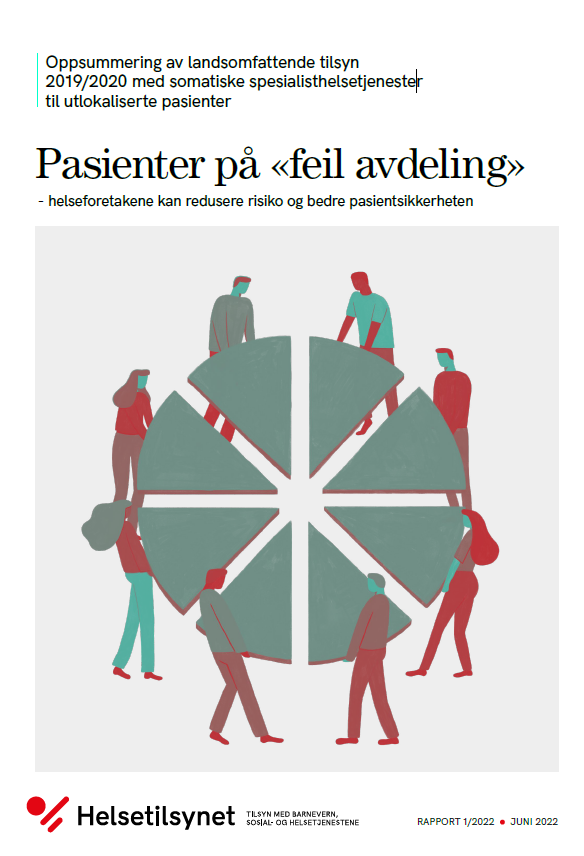Patients in the “wrong departments” – health trusts can reduce risk and improve patient safety
Summary of nationwide supervision 2019/2020 of somatic specialist health services for outlying patients
Report by the Norwegian Board of Health Supervision 1/2022

Overcrowding and lack of space can put patient safety at risk – and is not uncommon in Norwegian hospitals. Practical ways of solving this issue include discharging patients promptly after their treatment has been completed, placing them in corridors, assigning more patients to each room, and moving patients to a department or ward which has spare capacity. The latter is often referred to as “outlying”.
In 2019, the county governors carried out a nationwide supervision of the specialist health service and investigated whether the health trusts perceived outlying as a situation that increases the risk of healthcare failure. They also investigated whether the health trusts had implemented measures to reduce risk, both at overarching level and at the point of delivery.
This supervision has provided us with knowledge and insight into how the health trusts are working with regard to risk in cases where there is a shortage of beds and they are forced to transfer patients to the “wrong” department, i.e. move patients to departments which do not have the specialist expertise needed to treat the health problem for which they were admitted.
Eight of the ten health trusts covered by the supervision did not consider the outlying process to be a risk area that requires special attention or the implementation of measures to ensure that patients receive adequate healthcare regardless of which department they are in.
The Norwegian Board of Health Supervision is concerned that patients are being transferred to departments where they do not belong, but which have space, without the health trust having previously assessed the risks or implemented measures to reduce risk. Determining which patients are moved where should not be a random process.
The supervision showed that the health trusts had carried out few risk assessments, and implemented few measures to ensure good and safe services for patients who were placed in the "wrong department". Most health trusts did not have an adequate overview of the numbers of patients who had been transferred to other departments, or where in the hospital these patients actually were. Possible consequences include delays in doctors attending to patients or failing to attend to patients at all. Patients were also at risk of receiving inadequate follow-up from nurses and doctors with the right expertise to treat their health problems.
Health law sets requirements for management and systematic governance to ensure that services are appropriate. Necessary measures must be planned, implemented, evaluated and corrected.
The management of health trusts/hospitals must identify the outlying of patients as being a risk area. They must ensure that necessary guidelines have been issued regarding outlying, including guidelines for interaction and communication, and make it clear who is responsible for each decision. The management must follow up to ensure that planned measures have been implemented and are functioning satisfactorily, and contribute to high-quality, safe services.